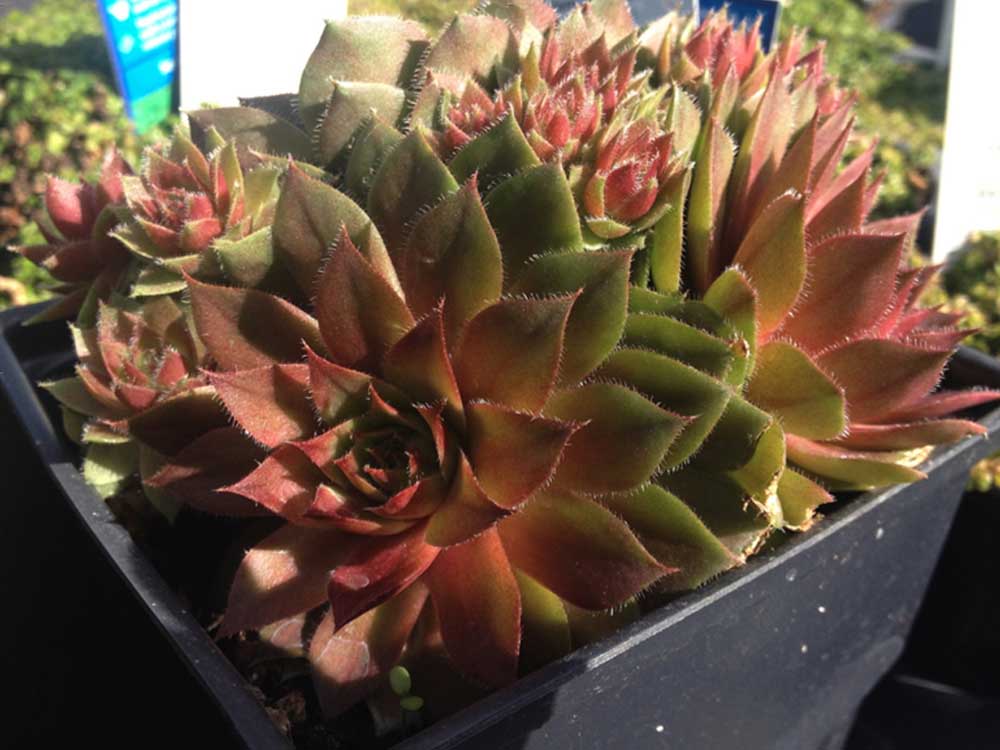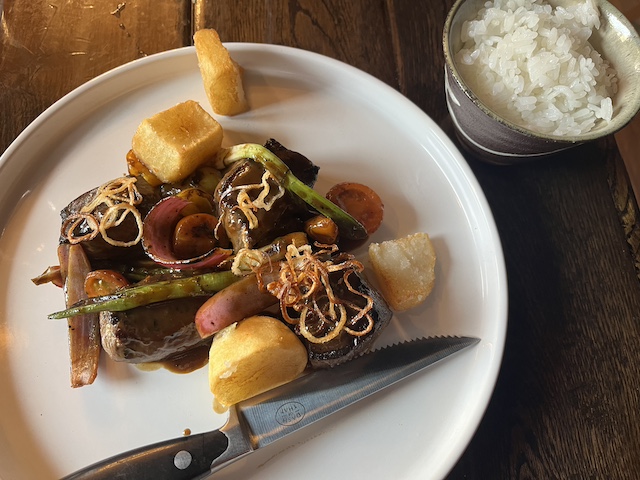16 Succulents To Plant Now
Published 12:00 am Tuesday, September 22, 2015

- Laura Kessinger/ For The BulletinSempervivum ìhens and chicksî turn red in the fall.
It’s perennial planting time, and with the first hard frosts of fall still at bay, now is the perfect time to encourage new plants to take root and prepare for winter.
Spring bulbs and summer blooms may be part of your planting strategy, but consider adding interest to your landscape now and into winter with cold-hardy cacti and succulents.
While all cacti are considered succulents, not all succulents can be counted as cacti. What they do have in common — from the spiniest prickly pear to the lowest-growing ground cover — is that all succulents are particularly skilled at storing water, plant experts say. They saturate the cells of their thick stems or fleshy leaves to survive the harsh droughts to which they’ve adapted.
Beyond their tough nature, succulents offer a surprising variety of flowers, tone and texture that both contrast and complement the common shapes and shades of Central Oregon landscapes.
Cacti
It’s correct to claim that cacti come from warm southern climates, but what some might not know is just how many come from cold, mountainous zones. According to the American Society of Plant Biologists, there are dozens of subspecies that thrive in poor and rocky soils, through hot, dry summers and freezing winter temperatures. Not every variety is suitable for our region, but many are native to areas just like ours — with gravelly lava soils, near sage brush and juniper.
Hedgehog Cacti (Pediocactus and Echinocereus)
These round and stout or slightly barrel-shaped cacti tend to be thick with sharp spines. Small- to medium-sized, they can be waxy and green or sometimes wooly looking, especially the sage-colored varieties with dense white spines. Given the full sunlight they rejoice in, they’ll flower during summer; from subtle pastels to striking brights.
Don’t blink, though, or you might miss the short bloom time in which they flirt with you. According to several cactus and succulent societies, some bloom for just one to three days. But don’t hold it against them — their strong geometric shapes are as pleasing to the eye by a picket fence as they are tucked between rocks in a bed.
An Oregon native, the “mountain ball cactus” (Pediocactus simpsonii) grows in high elevations as far south as New Mexico, according to the Lady Bird Johnson Wildflower Center. The symmetrical globes are dense with spines, nearly obscuring the green of the stems.
The “lace cactus” (Echinocereus reichenbachii) is another hedgehog type that survives cold winters. This one also tolerates brief periods of excessive moisture, one of the main causes of cactus failure.
Prickly pear (Opuntia)
Some of the most resilient cacti come from the prickly pear family. The characteristic paddlelike pads grow in segments, both with and without prickly spines. With adequate sunlight, they will produce bright red edible fruits.
The “Plains prickly pear” (Opuntia macrorhiza) grows naturally as far north as Canada. And the “Eastern prickly pear” (Opuntia humifusa), once established, can weather far worse winters than ours. The compressa and the fragilis subtypes are even more versatile, according to the Central Ohio Cactus and Succulent Society. Both tolerate light shade much better than their sun-loving sisters.
But don’t forget to look for cold-hardy varieties of “beavertail cactus” (Opuntia basilaris) and “grizzly bear prickly pear” (Opuntia erinacea). With shapes as playful as their names, they are known to be hardy to minus 20 F.
Leafy succulents
Although their subtropical relatives are particularly frost-sensitive, leafy succulents can be as reliable as they are rewarding. The sweet nectar from their colorful blooms is irresistible to bees, butterflies and other helpful pollinators, local plant experts say.
From the low-growing trailing types and tiny-leaved ground covers to the 2-foot-tall uprights with flowering spires, planting succulents now can have an immediate impact in a soon-to-be-bare bed where annual blooms and other perennials have faded. Plant in odd-numbered groups of three or five beneath ornamental grasses, or try taller varieties in tidy rows, perfect for the back of a narrow bed or to break up the monotony along fence lines.
Ice plants (Delopsperma)
The spreading habit of the “ice plant” and its long bloom time make it perfect for mass plantings. “Yellow ice plant” (Delosperma nubigenum) is a low-growing variety that blooms prolifically in spring. Tolerant of light shade, this plant works well around the base of big trees. For erosion control or steep slopes, try the “lavender ice plant” (Delosperma Lavender Ice). Orchid-colored, daisy-shaped flowers measure 2 inches across, nearly covering the light green blanket of foliage. With intermittent rain, this variety has been known to bloom clear into winter.
Houseleeks (Sempervivum)
These flowering succulents became known as “houseleeks” because of the tradition of planting on rooftops. Their reputation also mirrors the Latin words they derive their name from: semper (“always”) and vivus (“living”). This perennial plant keeps its leaves in winter, often changing color from light to dark green, crimson or even purple.
Colorful foliage complements autumn leaves and stands out against the snow.
“Hens and chicks” is a popular example, favored for its artichoke-like form and the tight tufts of monocarpic rosettes it spreads from. The “cobweb Houseleek” (Sempervivum arachnoideum) as the name implies, develops wispy white threads that crisscross the center of the rosette like a reclusive spider’s web.
Stonecrop (sedum)
One of the most versatile of all succulents, sedum (commonly called Stonecrop) includes a wide range of sizes and foliage shapes, plant experts say. Ground-cover sedum can creep or trail, perfect for uneven terrain.
With small white flowers on tiny tear-drop shaped foliage, “baby tears” (Sedum album chloroticum) is a dainty choice around other small plants. But my favorite by far is the “blue spruce stonecrop” (Sedum reflexum). The blue-green foliage resembles puffed-up pine needles and the small buttercup-colored flowers are profuse and ever blooming.
Taller, upright varieties tend to excel here and are showy bloomers. Growing up to 18 inches tall, the thick, broccoli-like heads begin blooming in late summer and the colors deepen and darken as they finish through fall. The flower heads go to seed before the snow hits, providing birdseed as well as adding winter interest.
“Autumn joy stonecrop” (Sedum Autumn Joy) blooms from August to November, a pastel pink in the beginning and in the end, a copper red. Another crowd-pleasing variety is the “autumn charm stonecrop’ (Sedum telephium Autumn Charm). This one takes the cake for fancy foliage: with a creamy white band along the serrated edges of each leaf, this one also changes color throughout the bloom cycle, from a carnation pink to a rusty brick red.
Proper drainage and plenty of sunlight
From the tiniest and spiniest to the colorfully creeping, succulents need only two things to please you: well-draining soil and a sunny spot to call their own. Disease-free and pest-resistant, the only threats to their survival are lack of sunlight or over watering, which suffocates the roots and leads to rot. Local garden centers recommend using a cactus potting mix, or to make your own by amending soil with plenty of pearlite, pumice, coarse sand or gravel.
The Henry Shaw Cactus and Succulent Society warns, however, that fine sand or too much soil in the mix will lead to certain failure. Using pea gravel as mulch will not only keep weeds at bay, but more importantly, it will protect sensitive and shallow roots from wind and rain.
— Reporter: laurakessinger@gmail.com






